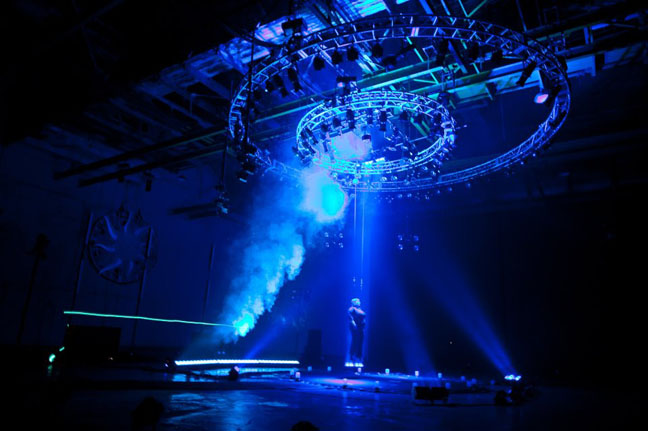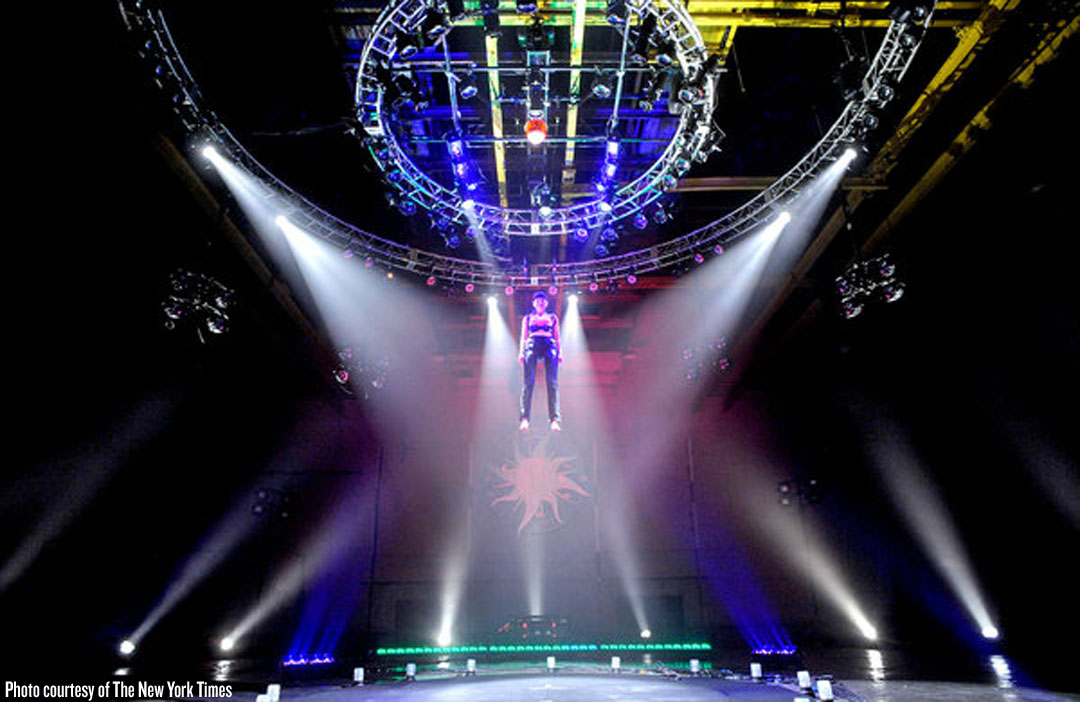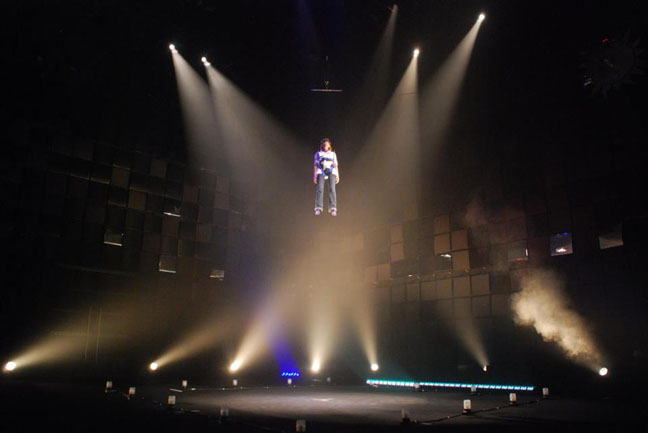In what easily ranks as the most brilliant combination of art and science I have come across in months, Yehuda Duenyas’ The Ascent is a neurological thrill-seeking work of brilliance that levitates its users high up in the air by harnessing their brain’s own electrical EEG readings. The more focused your brain is, the higher and faster you rise (accompanied by blue light). The more medium your brain’s focus is, the slower you rise (accompanied by green light). And for those who can’t manage to calm their mind and concentrate, well, you will barely move at all and be left with a droning red light at ground level. The New York Times’ Ariel Kaminer recently paid a visit to The Ascent and tried it out for himself. The following is an excerpt from his experience:
The mechanism is mercifully smooth. When my eyes were closed I couldn’t even feel if I was moving … I could see an aurora borealis of color playing across my eyelids. I could feel the pulse of bass. But every time I started thinking about how to describe those effects — or how cool my friend Heather would find all this, how disappointed I was to miss my friend Andrew’s birthday — I’d open my eyes and see that my readout had distracted itself back into the red. Time to focus again. Two-thirds of my way up, 12 spotlights from the circle below threw their powerful beams up into the semidarkness, and the distant echoes gave way to the triumphal strains of Gorecki’s Symphony No. 3, played at a volume just short of deafening. The colors gave way to a bright white light, suffusing the warehouse and seemingly sanctifying me. Up farther, as a crown of spotlights shone down, their beams and the ones from below crossed in midair. I rose past the lights and into some uncharted realm, possibly Heaven. Finally a great cymbal crash, a wild whirring of colors and a burst of silvery confetti. From 30 feet below I could hear people applauding. Down on the ground, someone congratulated me on getting the confetti burst, a final tippy-top thrill that only about 15 percent of ascenders achieve (those who struggle to find the right focus but who make it to the top anyway). I am ashamed to admit how proud I felt. Compared with levitating, walking again should have felt like a major letdown, but the journey left me exhilarated and ever so slightly altered.
The Ascent has since wrapped up its Brooklyn residency, but the team’s next goal is to take the experience on the road. Duenyas’ dream settings include the Park Avenue Armory, the giant entrance to London’s Tate Modern Museum, the Guggenheim, and even the Greek theater in Delphi. For some who have partaken, The Ascent’s immersive experience is so profound it borders on the spiritual. One user even turned to Duenyas after it was over and said, “That’s how I want to die. That’s perfect.” You can read the entire story and see video of the Times’ Ariel Kaminerby’s experience by visiting The New York Times. To enter the world of The Ascent be sure to visit TheAscent.co and follow the team on Facebook and Twitter.




